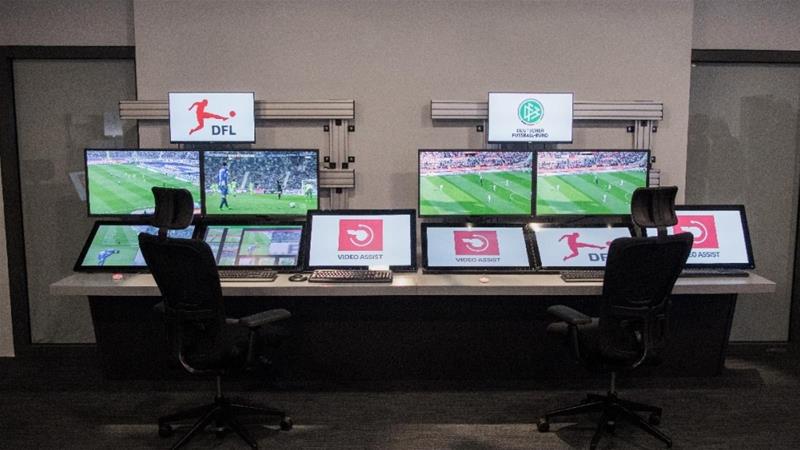The video assistant referee (VAR) is a football assistant referee who reviews decisions made by the head referee with the use of video footage and a headset for communication. In 2018 VARs were written into the Laws of the Game by the International Football Association Board (IFAB) following trials in a number of major competitions.
How They Operate
The referee requests a ‘review’ by the VAR to clarify any errors or oversight before conducting judgments during a match. The process begins with the video assistant referee(s) and the assistant video assistant referee (AVAR) reviewing the play in question on the monitors in the video operation room (VOR).
If the VAR believes there has been a potential clear error, he or she can also contact the referee with that judgment. The referee can:
- Change the call (which is his/her verdict) on the advice of the VAR
- Conduct an on-field review (OFR) by going to a designated spot on the sideline, called the referee review area, to review the video or
- Decide that he/she is confident and does not conduct an OFR.
There are 4 types of calls that can be reviewed;
- Goals and whether there was a violation during the buildup
- Penalty decisions
- Direct red card decisions (second yellow cards are not reviewable)
- Awarding a red or yellow card to a mistaken identity
The symbol which the referee communicates with the VAR for a review is by making the outline of a rectangle with his index fingers (indicating a video screen).
video via- Mangoman
Players could receive a yellow card for caution if they display this symbol.
VAR was conceived by the Refereeing 2.0 project in the early 2010s, under the direction of the Royal Netherlands Football Association.
If you found this insightful, share with a friend.






























Pingback: Super cool and interesting new Adobe Photoshop CC 2018 features